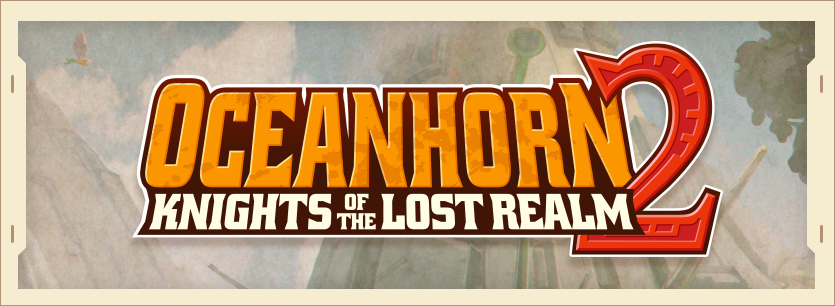The best thing about being a small team of developers is that we get to come to work and exchange opinions on what games we played lately, what retro titles our colleagues should check out, and what we could learn from the design of this or that game.
By popular demand, we decided to go over some of the games we think had some influence on our work for the Oceanhorn series, and in particular on its newest chapter, Knights of the Lost Realm.
Our first guest is Miko, Cornfox & Bros Game Artist. "I work very closely with Heikki (Cornfox's Creative Director) to create the visual style of the game. I focus mostly on environment art, but have worked on other things as well," says Miko, "We're trying to capture the feel of the original Oceanhorn, but the transition to the new Unreal Engine physic-based rendering opened up new possibilities for the series."
Knights of the Lost Realm sports a world inspired by quite many late-90s RPG games: in contrast to what came before, often set in a medieval world of knights and castles, here we have both technology and industrial elements seamlessly integrated into a "classic" RPG setting. Breath of Fire 3, Grandia and Alundra (all from 1997) are good examples of this style, where coal, electricity, and gritty backdrops are mixed with classic RPG stuff.
"The world of Oceanhorn 2 is not completely industrialized, and in most areas it doesn't go as far as many of the environments do in FFVII, for example." continues Miko, "We are big fans of this classic though, and one can most likely see the influence Midgar had had on Arcadia's capital, the White City. Like Midgar, it has a circular design and you can see gigantic pipes rising over the walls of the city, but unlike Midgar it’s not a dystopia. The White City is a beautiful and bright place, where the sun is always shining. In a way, we try to bring the scale of things to a level similar to what you see in FFVII: even if we use a different aesthetic approach, you feel like you could easily just walk on the pipes."
The more advanced technology in Oceanhorn 2 quite often have rounder and smoother shapes, much like some of the vehicles found in Akira Toriyama’s work. The Yellow Bird, Trin's airship, is the perfect example of this rounder design. The most advanced Arcadian tech takes this up a notch, featuring an even sleeker and aggressive design, inspired by modern sports cars or jet planes.
"And then we have the Living Fortresses," says Miko, "compared to the original Oceanhorn, we had a bit more technical freedom with the art, so we tried to make them look even more sophisticated and dynamic. If the Living Fortress in the first title was our version of the Metal Gear Rex, the Living Fortresses in Oceanhorn 2 are an evolution on that, Cornfox's Metal Gear Rays."
If you want to know more about the games and styles that inspired us during the development of Knights of the Lost Realm, stay tuned for Part 2!








